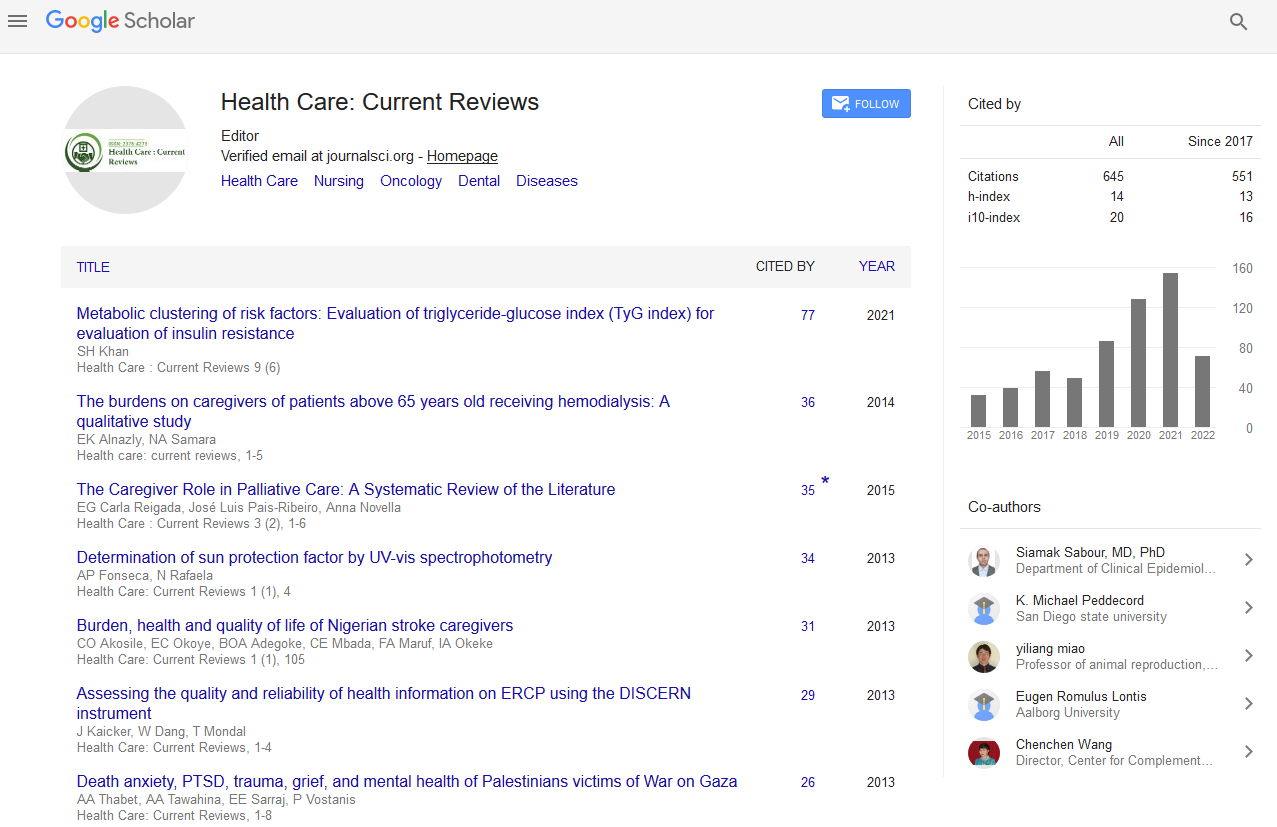PMC/PubMed Indexed Articles
Indexed In
- Open J Gate
- Academic Keys
- RefSeek
- Hamdard University
- EBSCO A-Z
- Publons
- Geneva Foundation for Medical Education and Research
- Google Scholar
Useful Links
Share This Page
Journal Flyer

Open Access Journals
- Agri and Aquaculture
- Biochemistry
- Bioinformatics & Systems Biology
- Business & Management
- Chemistry
- Clinical Sciences
- Engineering
- Food & Nutrition
- General Science
- Genetics & Molecular Biology
- Immunology & Microbiology
- Medical Sciences
- Neuroscience & Psychology
- Nursing & Health Care
- Pharmaceutical Sciences
Short Communication - (2020) Volume 8, Issue 4
Traditional Primary Care Changes due to Retail Services
Nikitha N*Received: 09-Jul-2020 Published: 28-Jul-2020, DOI: 10.35248/2375-4273.20.8.255
Abstract
After several decades of modest growth in retail clinic sites across the country, the movement toward on-demand, low-acuity health care options has now begun to accelerate and is increasingly being embraced by integrated delivery systems.
Keywords
Clinic; Pharmacy
Introduction
These non-traditional channels of access to primary care services include telehealth evaluations, asynchronous web-based clinical evaluations, as well as pharmacy-based and stand-alone retail clinics ( “ urgent care ” or “ immediate care ” ). Consumers are predictably drawn to the availability of online scheduling, convenient locations with easy parking, and reliably on-time and available appointments-qualities that define the customer experience in retail health care services. As Americans in almost every consumer-facing industry embrace express lanes, Fast Passes, priority seating, and the like, it should be no surprise that our patients have voted with their feet (and Health Savings Accounts) and put the medical community on notice that waiting days or weeks to see a primary care provider for simple and urgent conditions is no longer acceptable. As retail clinical venues are increasingly connected to hospital systems, specialty networks and traditional primary care services of integrated delivery systems, there is an opportunity to seamlessly integrate and triage more complex and higher-acuity conditions into care settings with additional clinical expertise and greater diagnostic capabilities. As a component of larger delivery systems, retail clinics have access to an integrated EMR, which allows for population health management activities and care plan continuity to be extended into previously independent settings. Retail can provide a lower-overhead health care venue that can help drive down high costs of health care for delivery systems that are organized into accountable care organizations and trying to manage the total cost of care for a cohort of the population. The repercussions of this growth and alignment should not be underestimated. Not since the hospitalist movement of the late 90s has a trend in American health care been poised to effect such a profound change in the daily lives of primary care internists. In a single decade, the hospitalist movement removed the burden of hospital rounds as well as night and weekend hospital call from the routine of most internal medicine practices located in urban geographies. That division of labor spurred increased focus and expertise for prevention and disease management in the ambulatory environment and new attention to high-acuity hospital diagnoses cared for by hospitalist providers. It also ushered in problems of care transitions, handoffs, and loss of familiarity with hospital services and specialty providers that continue to challenge today’s medical community. The retail movement will produce no less momentous shifts in the work and focus of primary care in the decade to come. That change in focus may benefit those we serve but will usher in patient care risks if not done correctly. To be sure, the changes facing primary care specialties today are not solely the consequence of an empowered consumer looking favorably upon on-demand clinic venues as a place to receive health care. The growing acknowledgement that the primary care medical home is the best foundation to improve the health outcomes of a population and lower the total cost of care is the second driving force that is redefining the daily routine of primary care.
Citation: Nikitha N (2020) Traditional Primary Care Changes due to Retail Services. Health Care: Current Reviews 8:255. doi: 10.35248/2375-4273.20.8.255.
Copyright: �© 2020 Nikitha N. This is an open access article distributed under the terms of the Creative Commons Attribution License, which permits unrestricted use, distribution and reproduction in any medium, provided the original work is properly cited.


